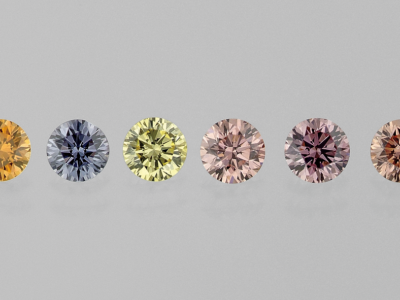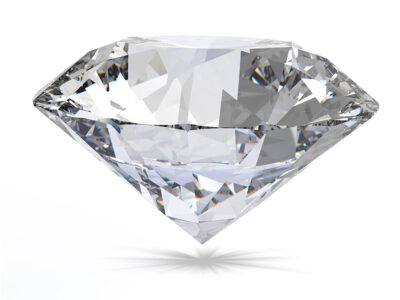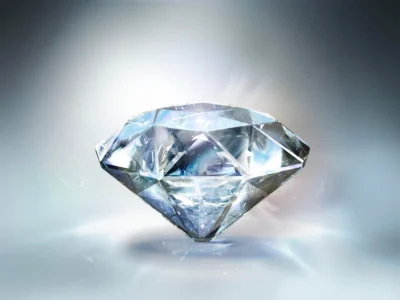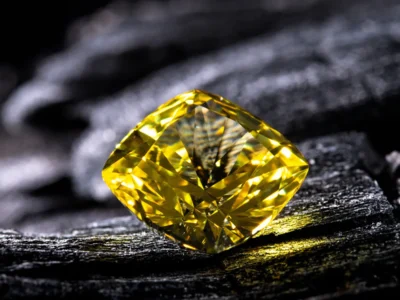When purchasing a diamond, you need assurance of its quality and authenticity. That’s where diamond certifications come in. These documents provide an unbiased evaluation of the diamond’s characteristics and serve as a guarantee of its value.
Two of the most renowned diamond certification laboratories are HRD (Hoge Raad voor Diamant) and GIA (Gemological Institute of America). With their meticulous assessments, you can feel confident that your diamond is in excellent condition and worth the investment.
What Are Grading Reports And Why?
When it comes to diamonds, knowing their grade is essential for making an informed purchase. The four Cs – color, cut, clarity and carat – determine the price of a diamond and provide buyers with an accurate evaluation of the stone’s quality.
Being misled about any of these traits can result in overpaying for a lower-grade diamond. To verify the quality, reputable gemologists offer diamond grading reports that detail its characteristics; although the term ‘certificate’ is widely used when describing these reports, they are not certifying the diamond but instead are assessing its traits.
Utilizing this service from accepted organizations such as GIA or HRD ensures that a buyer can proceed with confidence and security in their purchase.
Table of Contents
HRD vs GIA Certifications: Overview
HRD Certification
The Hoge Raad voor Diamant, or High Council for Diamonds, is one of the most esteemed diamond grading and certification organizations in existence.
Operational since 1970, this European-based body situated in Antwerp, Belgium has developed a reputable reputation across the diamond industry for its stringent standards and all-encompassing assessment protocols. Receiving an HRD Certification provides assurance that the diamond has been inspected by professionals and achieves the utmost quality level.
The HRD provides a variety of services for the diamond industry including educational courses, diamond examination equipment sales, and screening to distinguish between lab-grown and natural diamonds. The most sought-after of their services is their distinguished grading reports. They certify the analysis of natural, lab-grown, and treated diamonds, with high regard throughout Europe.
Unfortunately, their reputation doesn’t reach across the pond in America; numerous professionals perceive their evaluation standards as excessively lenient compared to many certifying organizations in the U.S. This discrepancy in ratings may be discovered if a diamond is submitted to both the HRD and a popular USA certifying institution for grading.
GIA Certification
The Gemological Institute of America (GIA), a non-profit organization with over nine decades of experience certifying diamonds and gemstones, is widely respected and trusted by consumers, jewelry retailers, and industry professionals.
The meticulous certification process entails a team of expert gemologists meticulously assessing all aspects including carat weight, clarity, color, cut, proportions, and any internal or external blemishes in order to provide an objective and unbiased evaluation of the diamond’s quality.
GIA certs provide additional insight into the diamond such as fluorescence which alters its appearance under certain light conditions; each report is uniquely identified with a GIA report number for easy verification of its details and authenticity.
The Role of GIA
It is essential to understand the role of the GIA and organizations like it, as they do not determine the diamond’s value. Rather, they generate an impartial report illustrating its distinct features. The actual cost of a diamond is determined by the market, taking into account the classifications mentioned in the review.
For example, if a GIA report grades a diamond as having an excellent cut grade, it will fetch a higher price than one with identical properties but lower cut quality. The assessment process includes experienced gemologists first confirming whether or not the diamond is natural or lab-created.
Then, they evaluate and rate it based on the four Cs – color, cut, clarity and carat weight – plus inspect if any clarity treatments have been applied. This comprehensive evaluation helps assemble a comprehensive picture of the diamond’s qualities which aids buyers and sellers in making knowledgeable decisions.
Read Also: Harry Winston Vs Tiffany
HRD vs GIA Reporting: Differences
Clarity
Clarity is a diamond’s imperceptibility to the naked eye of any internal or external flaws, often known as inclusions. These blemishes can manifest in various forms such as feathers, chips, cavities, twinning wisps, and indented naturals.
Inclusions may reduce the diamond’s value due to their impacts on its appearance and brilliance. Both the GIA and HRD have distinct scales for judging clarity; however, they are assessing similar criteria.
The GIA grades clarity according to the following scale: Flawless Internally flawless VVS1, VVS2, VS1, SI1, SI2, I1, I2, I3 On the other hand, the HRD utilizes this scale: Loupe-clean VVS1, VVS2, VS1, VS2, SI1,SI,2 P1, (Piqué) P2 P3.
In an evaluative study conducted by Rapaport, certain diamonds were assigned a higher grade for clarity by HRD compared to what they obtained from GIA.
This corroborates with industry agreement that GIA tends to be more stringent when grading clarity than HRD. Consequently, buyers may end up paying over the odds for an HRD-graded diamond.
Cut
The cut of a diamond encompasses its facets, polish, depth, and symmetry – all integral elements that determine how much brilliance it will exude. If a high-quality shine is desired, selecting a diamond with an impressive cut is paramount.
The HRD grades cut on a scale ranging from poor to excellent which consists of three subcategories:
- Proportions judging the display of fire and radiance
- Symmetry assessing the shape and alignment of facets
- Polish mapping out the smoothness of the stone’s surface
- Similarly, GIA evaluates proportions, symmetry, and polish when assigning a grade yet differentiates these factors in individual sections instead of grouping them under one criterion as HRD does.
Notably, Rapaport tested ten diamonds and found two cases where HRD rated the cut one level higher than GIA – indicating that if all else remains equal, someone may pay more for it based on the HRD’s mark.
This reiterates the importance of understanding certifying bodies’ grading systems specifically with regards to cut grades as that can reflect massively in the diamond’s beauty and worth.
Carat
The carat weight of a diamond is a consistent and reliable metric universally acknowledged in the diamond industry, representing a unit of weight equal to 200 milligrams.
The GIA and HRD have earned praise for their exact assessments of carat weights due to this measurement’s objectivity and standardization.
Once placed on a scale, this number isn’t open to personal interpretation or dispute; regardless of who is weighing the gemstone, its weight does not change. This uniformity serves as an effective tool to promote transparency and accuracy in diamond dealings, empowering buyers and sellers alike with essential information pertaining to the stone’s weight for informed decision-making.
Format
The HRD and GIA grading reports follow a similar layout, however, discrepancies can be observed when analyzed more closely. While HRD displays color, clarity, and cut grades on the left panel alongside a diagram that features proportions, symmetry, and polish measurements – each ratio such as table depth, crown height, and width being labeled separately – GIA also gauges proportion yet does not distinguish each ratio explicitly.
Both documents are structured to be comprehensible and assist in translating the diamond’s quality; though if you wish to further comprehend the diamond’s characteristics or compare each score to its ideal value, you may need to further examine the grading scales or consult online resources. This helps you make better-informed decisions when obtaining or selling diamonds.
Color
A diamond’s color grade reflects its degree of colorlessness or if it displays tinges of brown or yellow. Diamonds at the colorless end of the spectrum are generally accepted as more precious.
Both the GIA and HRD employ a grading system that ranges from D (colorless) to Z (distinct traces of yellow). Experts in the domain suggest that, typically, HRD tend to assign diamonds one color grade higher than do GIA. In a Rapaport examination involving 10 diamonds, three diamonds received divergent ratings; in two cases HRD issued a higher grade while in one instance GIA determined a higher classification.
More tests conducted by industry professionals have shown that on average, the HRD tends to award stones two grades above the GIA figure. This discrepancy can be impactful for buyers; if you purchase what you believe to be a G-graded diamond through an HRD certificate but is actually classified an H by the GIA, you could potentially overpay for a stone with a higher rating than expected.
To assure you receive accurate information upon purchasing diamonds, it’s critical to be aware of each certifier’s grading standards and verify their assigned color grades with trustworthy sources.
HRD vs GIA: Which Certification Should You Get?
When it comes to selecting between HRD and GIA certifications, both possess their own unique advantages and reputations in the diamond business. HRD certifications are distinguished for their stringent grading criteria and focus on precision, while GIA certifications are globally recognized and broadly accepted.
The final choice of certification is determined by your individual needs and preferences. If accuracy is paramount to you or if you require a certification that adheres to rigorous grading guidelines, then HRD may be the ideal option. However, if international acknowledgment and widespread acceptance are important to you, then GIA certifications would be the better choice.
Evaluate your budget, the purpose for the certification, as well as the certain requirements of the diamond industry in your area prior to making a decision. Don’t forget to explore thoroughly and seek advice from experts to ensure you select the best certification for your requirements.







Comments